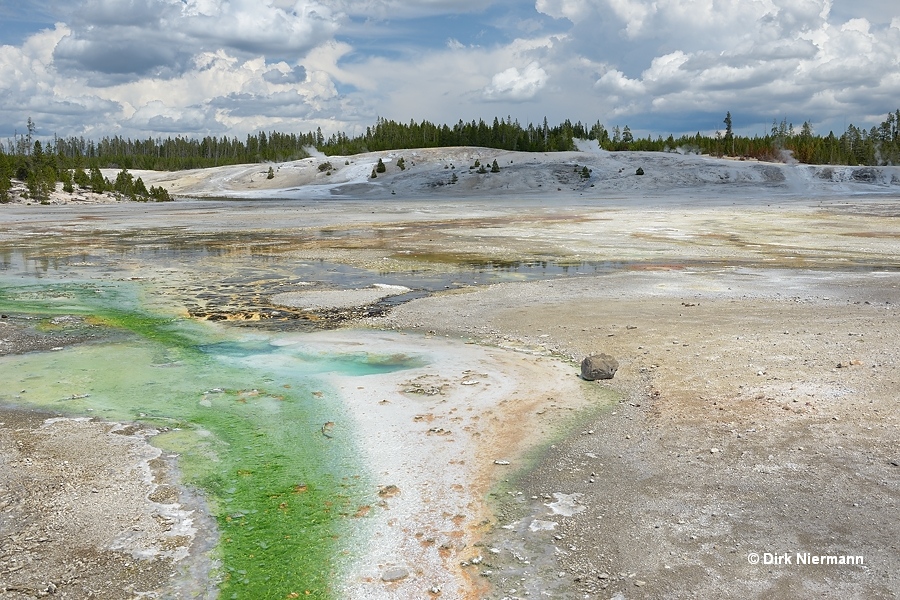Norris Porcelain Basin - Features east of the central boardwalk to Pinwheel Geyser
Coming from Norris Museum, an unnamed cerulean pool is the first feature on the east (right) side of the central boardwalk. Actually, this pool is not part of Sunday Geyser, as the sign at the boardwalk may imply. It's a discrete spring, for which weak eruptions have been recorded.
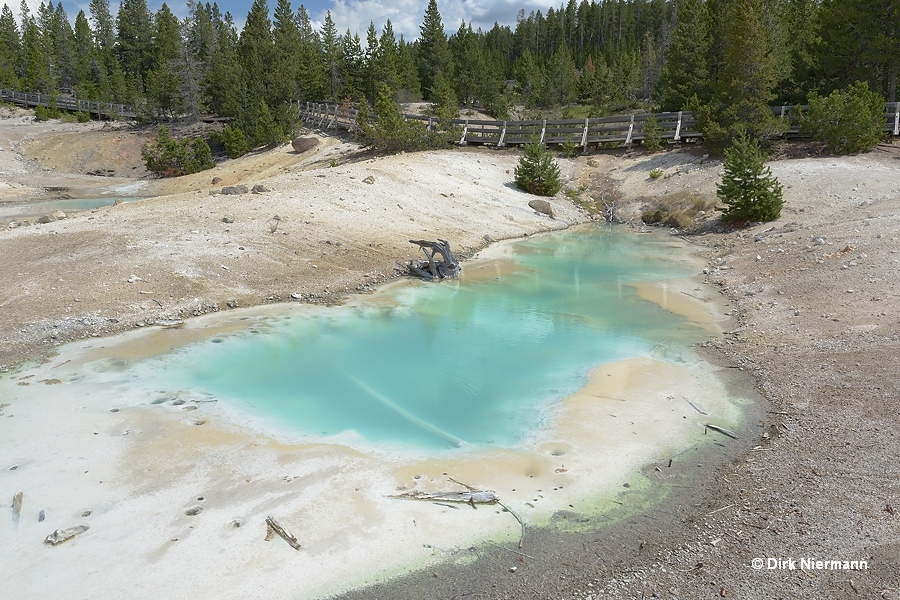
Sunday Geyser, active for the last time in the early 1980s, occupies the south end of the cerulean pool.
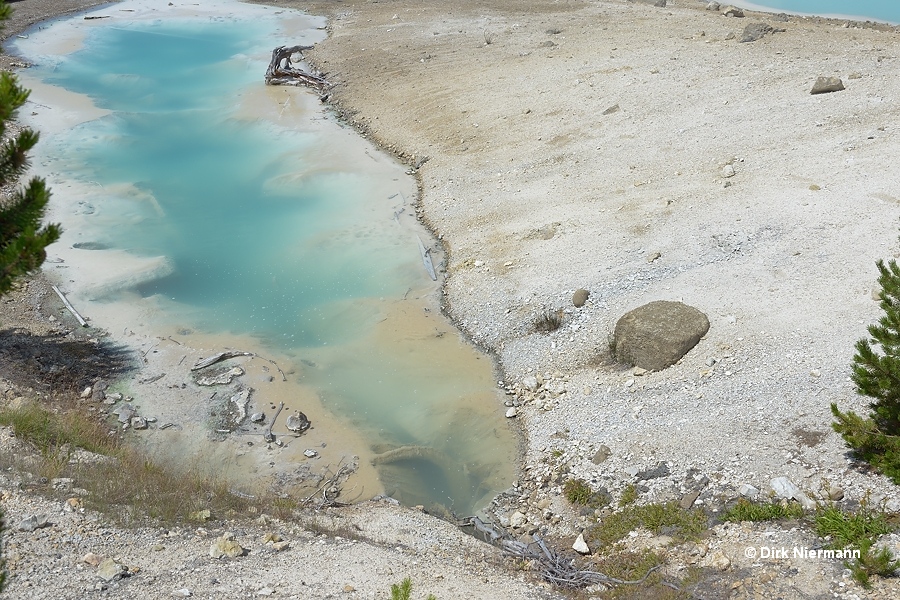
East of Sunday Geyser a further cluster of bluish clouded hot springs appears. This is called Colloidal Pool and it's best seen from the boardwalk leading to Porcelain Springs.
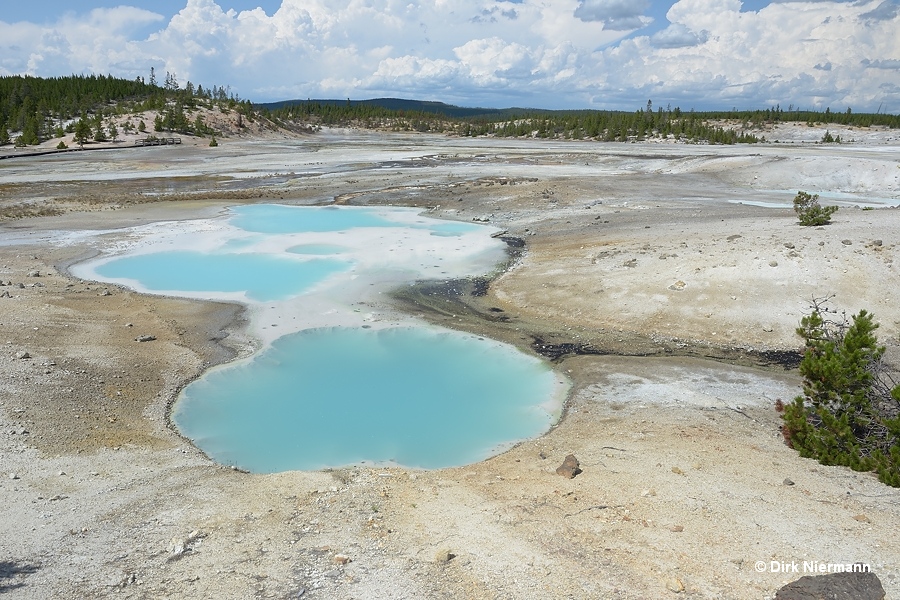
Across the boardwalk from Colloidal Pool a deep crater, partially filled with blue water, catches the eye. Hurricane Vent was active in the late 19th century, and has been more or less quiet since then.
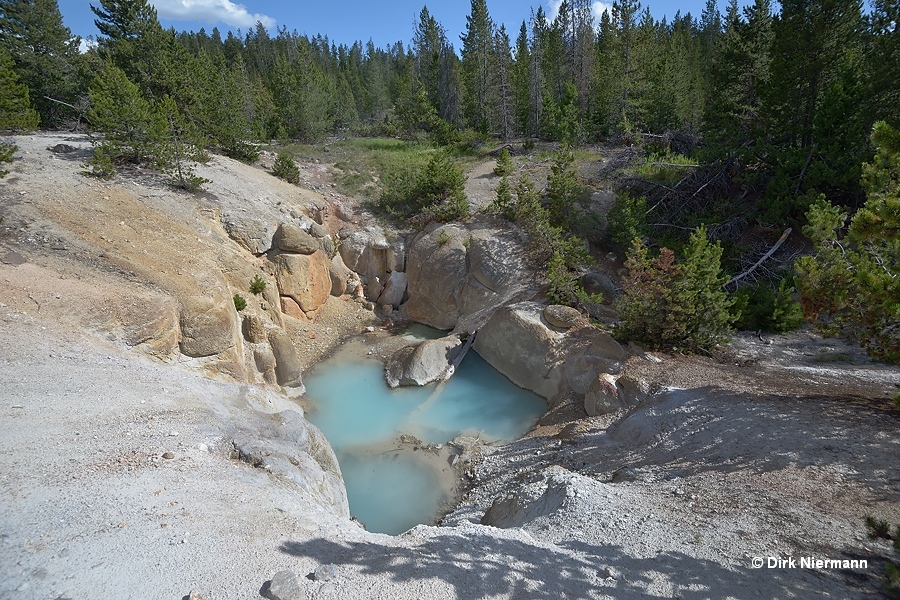
Back to the north side of the boardwalk, a third cluster of blue springs adjoins east of Colloidal Pool. In contrast to Colloidal Pool it is not named, but listed as NPBNN036 in the RCN database.
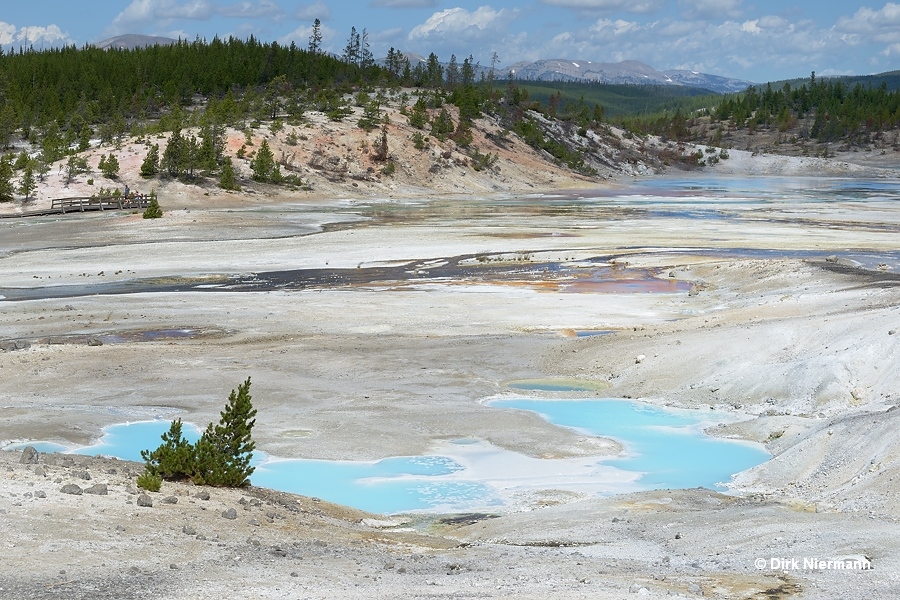
At the far side north of Colloidal Pool and NPBNN036, Arsenic Geyser plays from a brown, iron oxide stained crater close to some small rocks. Its interval is very variable from minutes to some hours, and it is known to have dormancies. As indicated by the name, the water of Arsenic Geyser contains a quite high concentration of more than 2 milligrams arsenic per liter, however, this is no more than with other springs in the surroundings.
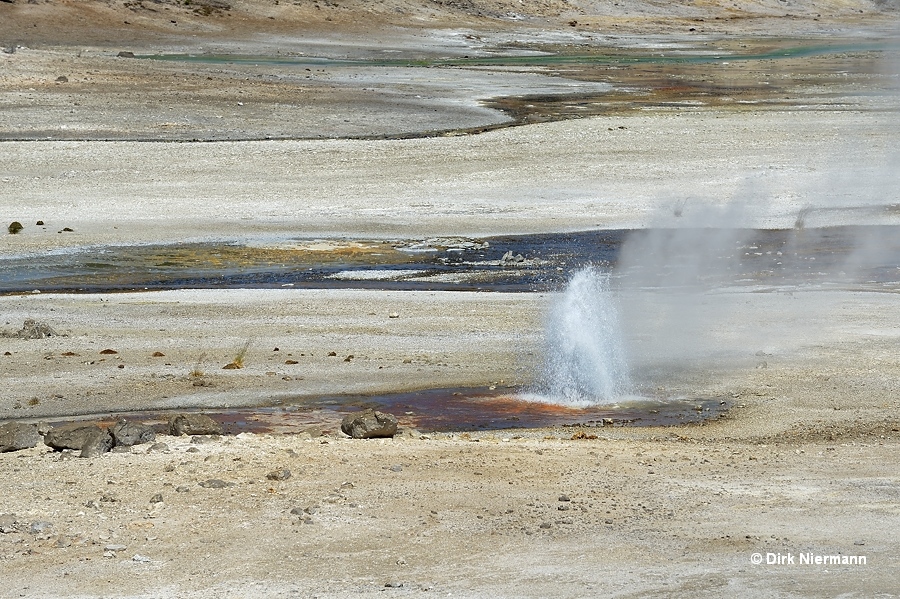
The flat north of Arsenic Geyser is home of further medium sized geysers such as Fireball Geyser, Fan Geyser, Pinto Geyser, and others. To the east the area is bordered by a low ramp, actually the basement of the old loop trail, used up to the late 1960s. Depending on someones position it's not always easy to identify an erupting geyser in this area.
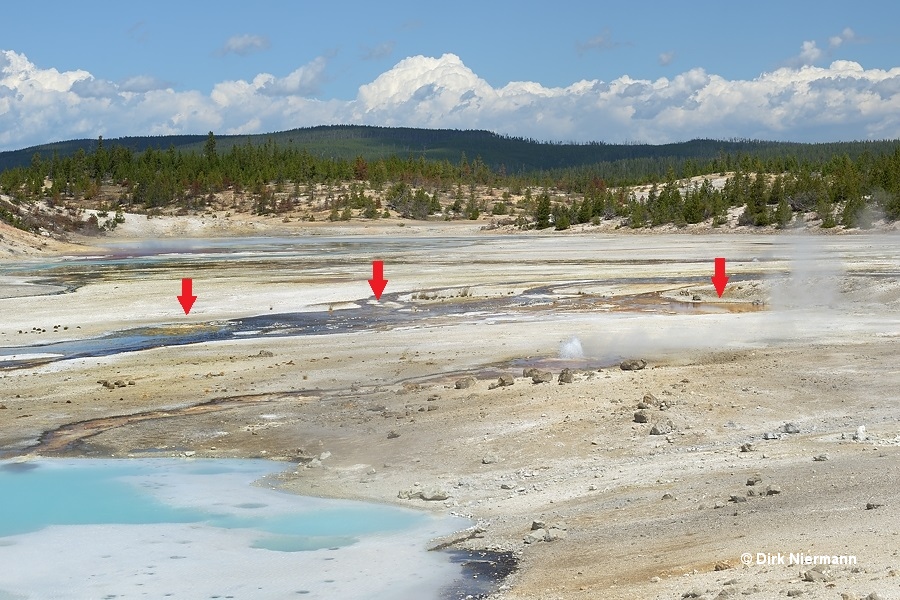
Fireball Geyser used to be a frequent performer until the early 2000s, but now it's quite variable and often pausing a few days or more. Fan Geyser is very rarely active, and if, than mostly during the so-called "disturbance" in late summer. The same is true for Pinto Geyser north of Arsenic Geyser. The eruption shown below lasted 9 minutes and 30 seconds.
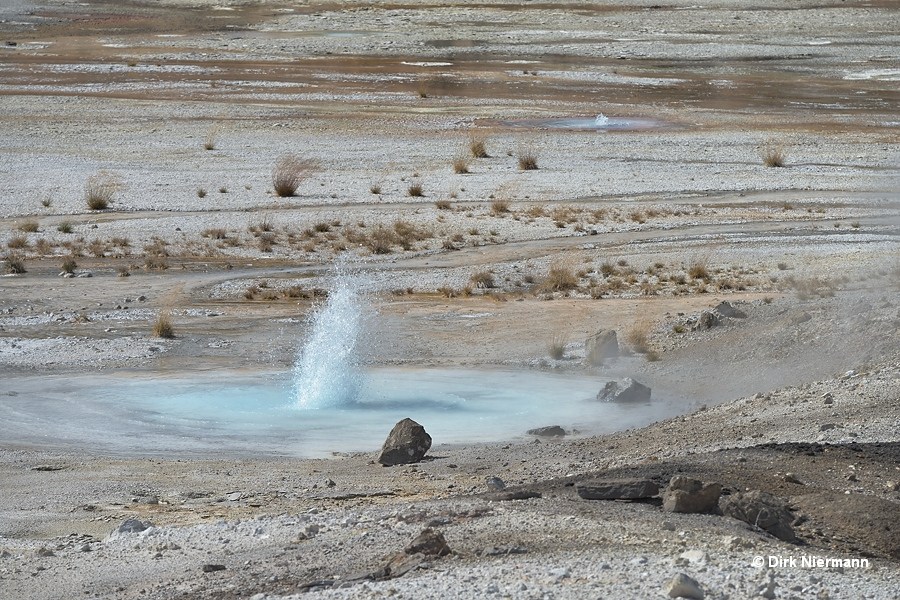
Some features of Lava Pool Complex including Lava Pool itself every now and then are showing small eruptions, too. Lava Pool Complex is located at an angle between Arsenic Geyser and Pinto Geyser.
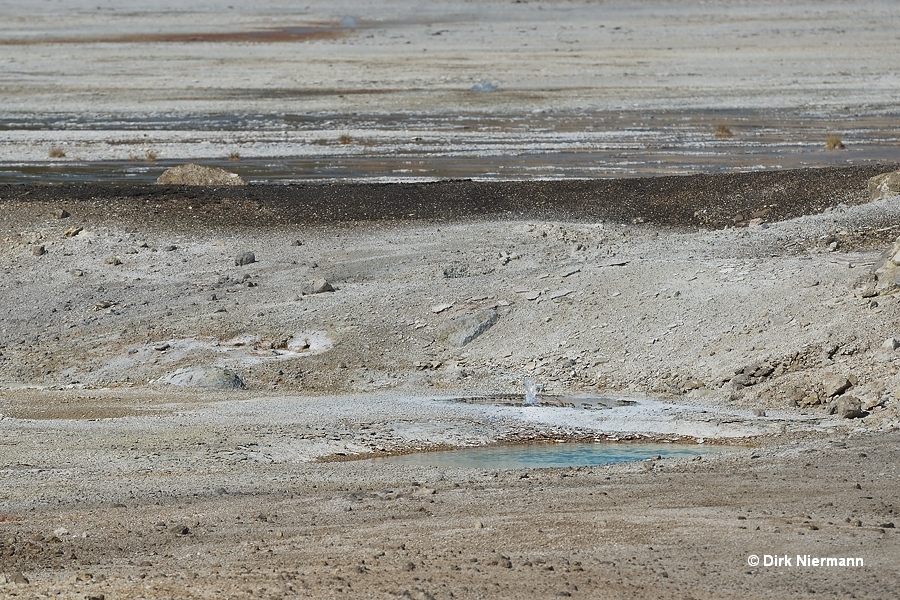
The area west of Fireball Geyser encompasses some of the larger geysers of Porcelain Basin, which are moreover much closer to the boardwalk compared to the geysers discussed above. Among those Constant Geyser is the most reliable performer, with an interval of minutes to some hours.
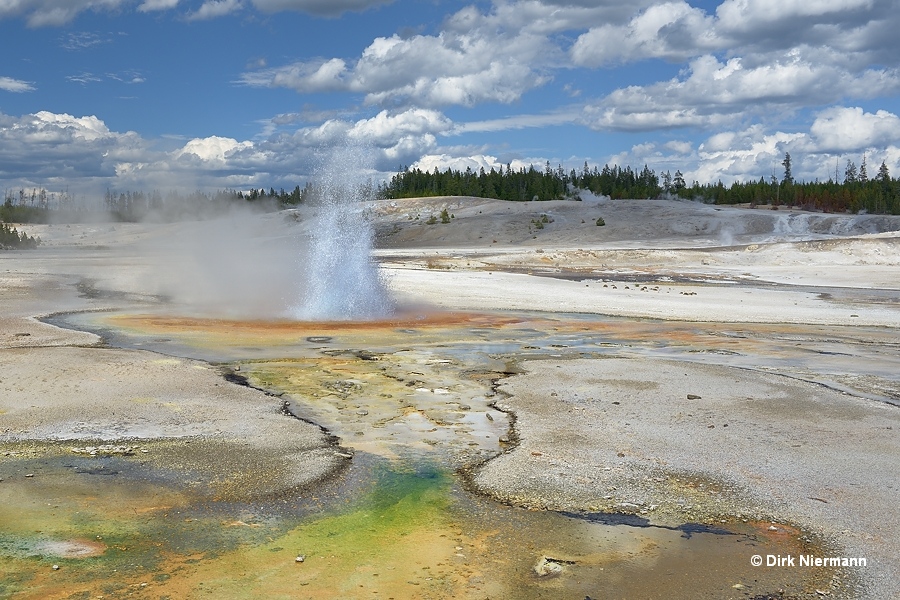
Between Constant Geyser and the boardwalk, almost next to the boardwalk yet, the two Whirligig Geysers are located. Currently, Little Whirligig Geyser is no more than a tiny vent in a shallow pool at best. The period it had been active reaches back to pre-1991. Aside from this, the picture below shows very clearly the dark purple, waving streamers of the thermophilic green alga Zygogonium, which thrives in acidic (pH 2.4 - 3.1) water at temperatures from 20 °C to 31 °C (68 - 88 °F).
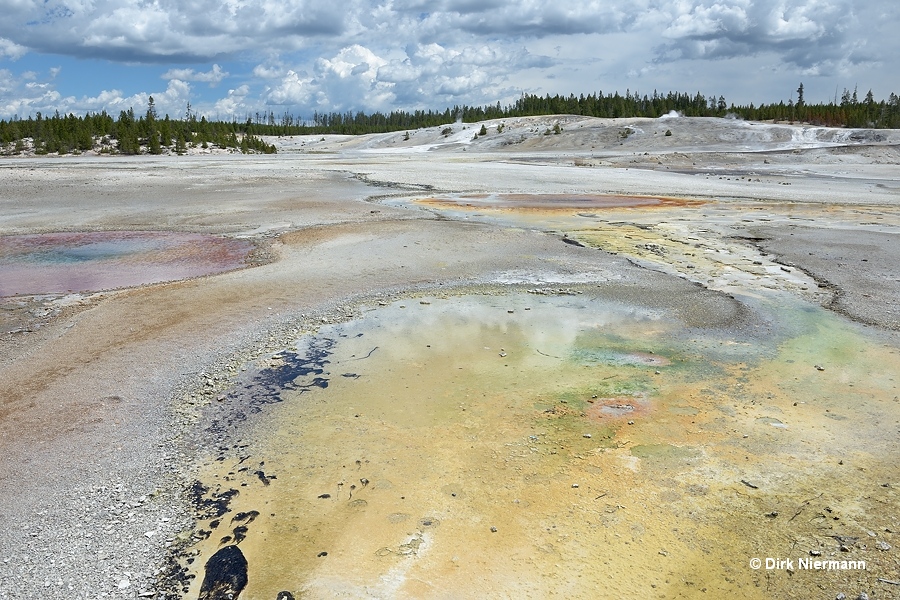
A few feet north Whirligig Geyser is still active on rare occasions, at least.
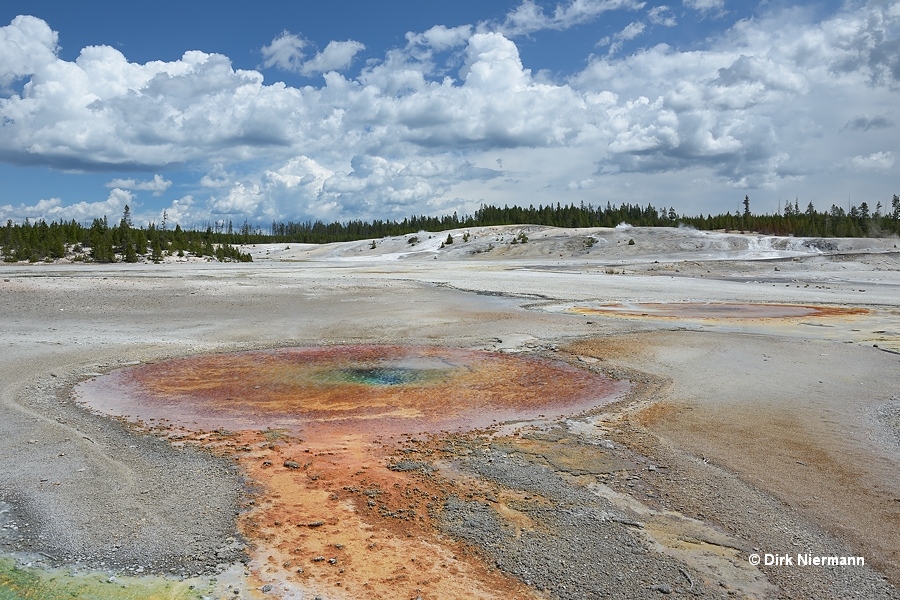
After Whirligig Geyser the boardwalk follows the runoff channel of Pinwheel Geyser. Typically the runoff shows currents with different colors because the rusty-orange iron oxide layer deposited by the acidic geyser water is partially colonized by the thermophilic red alga Cyanidioschyzon, forming brightly green coatings where the strongly acidic water holds a temperature of 40 °C to 55 °C (104 - 131 °F). Obviously, even red algae can display green colors. Sometimes the color contrast gets amplified by the archaeon Metallosphaera yellowstonensis, whose intensely orange mats grow on iron containing substrates at 50 - 72 °C (122 - 162 °F). Some small geysers are loacted next to the runoff channel. The most prominent of them is called Splutter Pot.
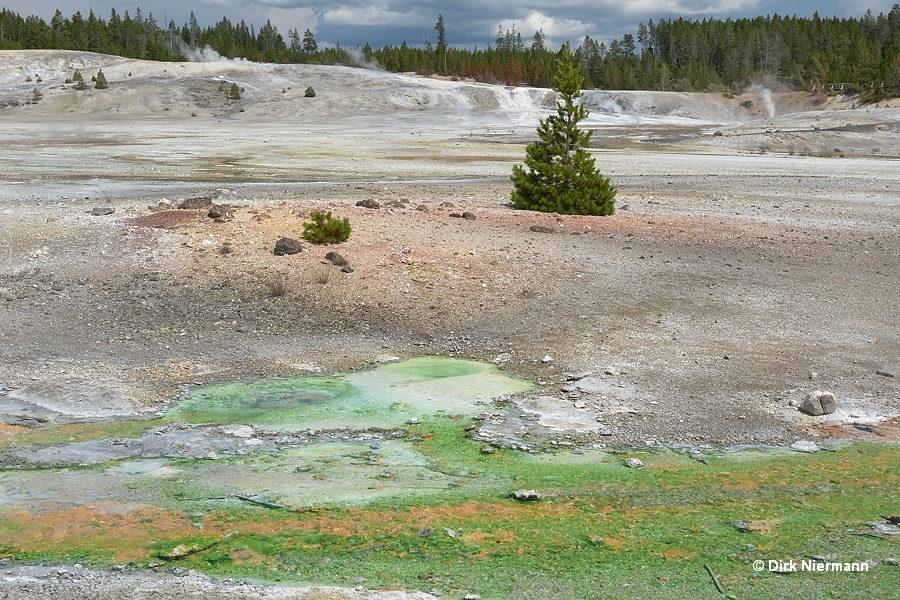
Pinwheel Geyser itself can be seen from the observation platform at the north end of the boardwalk (Update: This platform has been removed in 2015. The new boardwalk keeps larger distance to Pinwheel). The Cyanidioschyzon color pattern of Pinwheel's runoff is already present in the geyser crater, originated by cooler traversing water, emitted from Sand Spring and Sieve Lake. The feature north (on the photo on the far left side) of Pinwheel is probably Pequito Geyser. Pinwheel Geyser is dormant since 1974.
